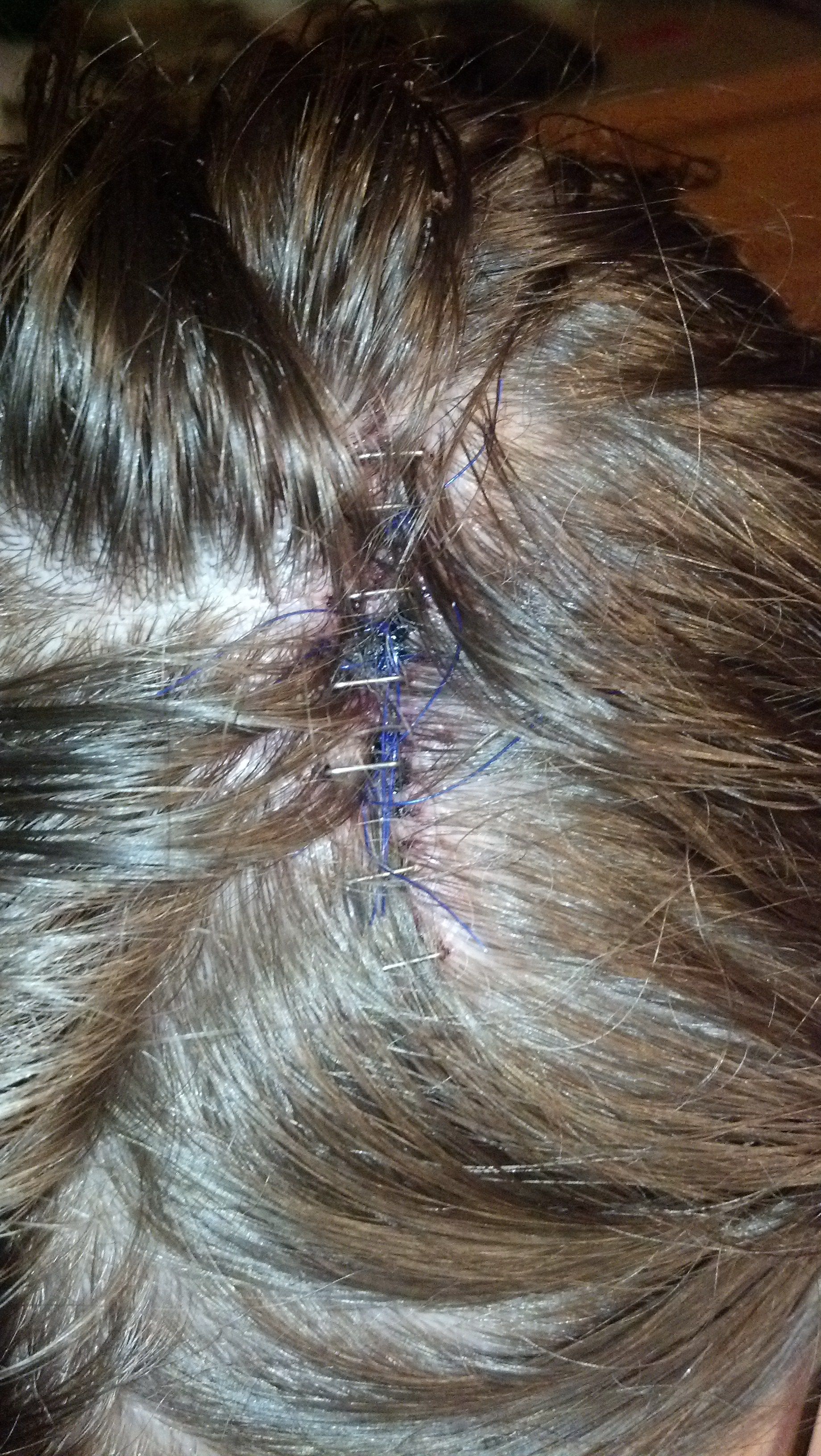Crusty and gross. That’s how Aly Longendyke describes the itchy patch of skin she discovered above her left ear in late 2013. Twenty-five years old at the time, the Minneapolis native had long dealt with a dry scalp (thank you, Midwestern winters!), so she figured dandruff shampoo would do the trick. Except the spot didn’t go away, and it even bled a little.
“But I wasn’t really fazed by it,” Longendyke, now 31, recalls. “I assumed it would clear up.”
When she got her hair cut in January 2014, her hairdresser, Molly Louismet, noticed the silver-dollar-size lesion right away. “I asked, ‘Did you hurt yourself?’” says Louismet. Her client explained that the mark appeared out of nowhere, had been there for a few weeks, and wasn’t healing. The last set off alarm bells for Louismet. Even though she wasn’t sure what the patch was, she advised Longendyke to make a derm appointment stat, just in case.
Longendyke was diagnosed with basal cell carcinoma, the most common form of skin cancer.
It’s a dang good thing she did: Longendyke was diagnosed with basal cell carcinoma, the most common form of skin cancer. If caught early, basal cell is very treatable. In Longendyke’s case, that meant undergoing an outpatient surgical procedure to remove it.
Scalp cancers can be quite serious, though: Melanoma on the scalp typically has a worse prognosis than on other parts of the body, several studies have found. Part of that is due to its typically late diagnosis, but melanomas on the scalp may also just be more aggressive.

For Longendyke, who’s been in the clear for six years, her only souvenir of the ordeal is a small bald spot tucked under the rest of her hair. She credits Louismet with giving her the push she needed to see a doctor about it. “Molly and I have a wonderful relationship, and her suggestion helped break the seal to schedule that dermatologist appointment.”
Seeing Spots
Longendyke’s story isn’t as uncommon as you may think. More than half of the hairstylists who participated in a study last year in Atlanta said they had referred a client to a derm for a suspect mole, per the Journal of the American Academy of Dermatology. It makes total sense: Beauticians you see every few months are more intimately familiar with your skin (especially areas you can’t peep without the help of a mirror or yogi-master-level contortion) than someone you go to once a year.
Education For All
Sure, if you scan a beauty-school curriculum, you likely won’t find a class called How to Spot Cancer 101. But a number of programs, sponsored by orgs like the Skin Cancer Foundation and the American Society of Dermatologic Surgeons, have popped up to train stylists (and in many cases, manicurists, facialists, and massage therapists too) on skin-cancer warning signs. “A lot of hairdressers have been in a position where they found something but didn’t know if they should say something,” says Marisa Garshick, MD, a board-certified dermatologist at New York’s Medical Dermatology & Cosmetic Surgery Center.
You don’t have to sit back and wait for your stylist to take the lead, though—ask her outright to do some surveillance for you. It doesn’t have to be awkward: “Just casually tell your stylist, ‘If you see something on my scalp, please let me know,’ ” says board-certified dermatologist Antoanella Calame, MD, owner of the online training program Eyes on Cancer (which Louismet signed up for at the recommendation of her salon owner after she helped discover Longendyke’s carcinoma).
The best time to have your stylist take a closer look is when your hair is wet, adds Calame, since wet hair is easier to part and puts more of your skin on display.
Since receiving her certification in 2018, Louismet has raised concerns with three clients—one of whom had coincidentally just returned from the dermatologist for treatment of the very mole Louismet noticed. (Good job, girl!) The course left her feeling better informed and even more empowered to be on the lookout. “I want to know what I’m looking for on their neck, scalp, and ears,” she says. “There are so many opportunities to help your clients beyond just their hair.”
Doctor’s Orders
Even with a formal certification, it’s important to keep in mind that stylists can only flag suspicious spots—they can’t (and shouldn’t) play doctor. “If the hairdresser sees anything they’re questioning, then it’s best to speak to a board-certified dermatologist and have them evaluate the spot,” says Dr. Garshick. “Sometimes they’ll choose to monitor it, or they’ll take a little sample of it to test just to make sure everything is okay.”
For Longendyke, who continues to get her hair cut by Louismet, the stylist’s willingness to see something and say something was transformative. “I don’t know where I would have ended up if she hadn’t pushed me to get it checked.” Talk about a life-changing haircut.
Extra Set Of Eyes
So your go-to stylist hasn’t been certified through a cancer-detection program. No sweat. She can still help you keep your scalp healthy by watching for the melanoma ABCDEs (and you could use a refresher too, huh?). If you’ve got a spot with any of these characteristics, you’ll want to see a derm right away, because early detection is everything.
- ASYMMETRY: The two halves of the mole don’t look the same.
- BORDER: The area has jagged or uneven sides.
- COLOR: The spot has multiplehues (tan, dark brown, or even purple or red).
- DIAMETER: It’s larger than a pencil eraser(about 1⁄4 inch across).
- EVOLVING: The area has grown or changed color, o r is crusty or bleeding.
This article appears in the May 2020 issue of Women’s Health, available April 21. Subscribe now.
Source: Read Full Article
